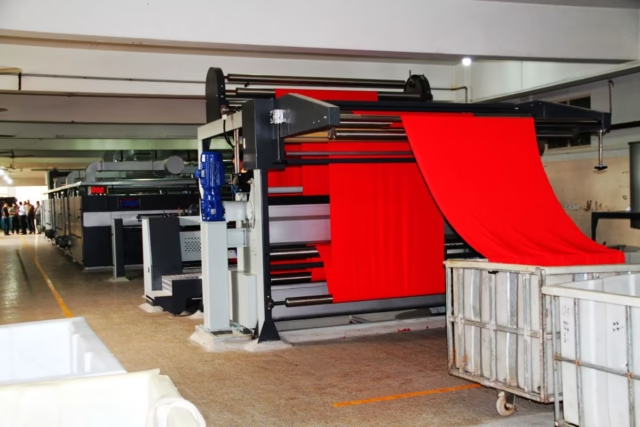The process of transforming raw fibres into finished cloth is an intriguing one by way of rigorously managed industrial procedures. T&A Textiles Manchester, being a UK market leader, illustrates how old-world skills blend with new technology to make good-quality fabrics. This intricate value chain starts with fibre choice and continues through spinning, weaving, colouring, and finishing processes, each successive step calling for specialist skills to produce the ultimate product of demanding standards for strength, comfort, and beauty. Whether making natural cotton weaves or advanced synthetic blends, textile producers have to reconcile efficiency with environmental friendliness in the lifecycle of production. This book deconstructs the eight fundamental processes of making fabrics, and how every single operation goes into the fabrics we wear every day in clothes, furniture, and industrial use.
Fibre Selection and Preparation
The process starts with choosing the right raw materials, natural fibres such as cotton, wool, and silk or man-made filaments such as polyester and nylon. Natural fibres are cleaned and carded to align the fibres and eliminate dirt, whereas synthetics are poured as long filaments from chemical solutions. Here at plants such as Textiles Manchester, quality control begins at this raw stage, checking fibre length, strength, and homogeneity. Mixing various fibres at this stage results in hybrid materials with integrated properties. Prepared fibres now go into spinning, where their conversion into yarn takes place. Good fibre preparation guarantees homogeneity during ensuing manufacturing processes.
Printing and Pattern Application
Fabric printing introduces ornamental patterns by various methods. Rotary screen printing effectively prints patterns on long runs of fabric, while digital inkjet printing provides detailed, customisable designs without setup charges. Older techniques such as block printing continue to supply specialist markets for artisanal embellishments. Finishes may produce metallic, glow-in-the-dark, or photochromic effects. Printing is a precision process of careful alignment (registration) to avoid blurring of patterns and skilful colour management to achieve a correct reproduction. Mills need to cure prints effectively to ensure colour fastness. This process turns plain fabrics into patterns with visual interest for fashion and interior design uses.
Quality Control and Testing
Extensive testing takes place at all stages of manufacturing to preserve standards. Fabric is inspected for weaving, colouration consistency, and application of finishing. Laboratory tests determine strength, colourfastness, shrinkage, and other performance criteria. Statistical process control determines production trends that require adjustment. Automated inspection systems with high-definition cameras find minute defects in modern mills. Certifications confirm safety for sensitive uses. Fabric that fulfils all specifications only goes to distribution. This full-quality assurance guarantees customers get trusted, consistent material suitable for their intended use.
Finishing Treatments
Some kinds of treatments will complete the performance features of textiles and add appeal to them. Although chemical treatments provide features like waterproofing or flame resistance, mechanical finishes like brushing create soft surfaces. Pre-shrinking the fabric causes garments to shrink less; this is what sanforisation is all about. Another one is the enzyme washing done to soften the denim without adding chemicals. Eco-friendly factories now use ozone treatment and laser finishing to minimise the use of chemicals and water. Quality control inspections confirm finishes meet expectations without compromising fabric integrity. Good finishing changes the cloth to its final use to create starched shirting, fluffy towels, or functional clothing for industrial purposes. These methods give raw material great value.
Distribution and packaging
With adequate protection from moisture and dirt, finished fabric is folded for export or wound onto bolts, and barcodes keep track of production runs. Ecologically benign mills use recyclable materials to lower packaging waste. Some textiles undergo finishing processes during packaging, including antimould treatments for export shipments. Distribution chain management ensures fabrics arrive at manufacturers in the best condition, either nationally transported or delivered to domestic designers. Effective inventory control guards against quality loss during storage. The packaging phase sends textiles toward their final products all around.
Conclusion:
Fabric making is an extraordinary conjunction of science, technology, and art, converting plain fibres into fabrics that clothe, adorn, and cover us. As ecological concerns restructure the industry, these age-old processes persist to adapt through technology as waste and energy consumption decrease while upholding the handcrafted character of high-end fabrics. This is how fabric is manufactured step by step.
Also, read: What Bath Towel Styles Are Trending in 2025 Homes?






